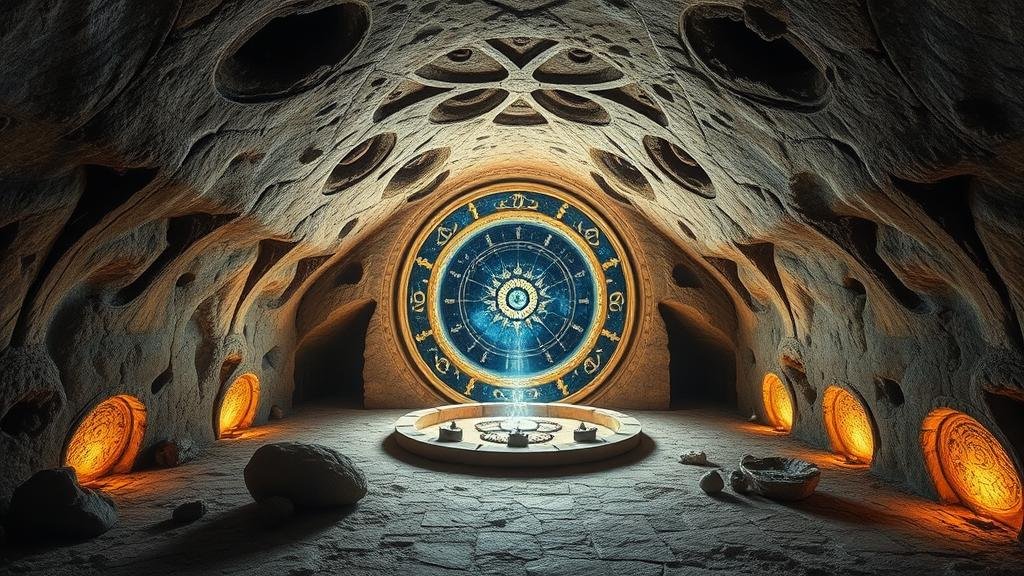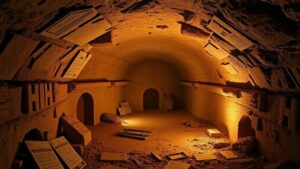Discovering the “Chamber of the Divine Circle,†an underground sanctuary perfectly aligned with celestial events.
Discovering the “Chamber of the Divine Circleâ€
Deep beneath the volcanic landscape of the Azores, a remote group of islands in the Atlantic Ocean, lies the enigmatic “Chamber of the Divine Circle.†This underground sanctuary, estimated to have been used as a place of worship and astronomical observation around 700 B.C., is perfectly aligned with significant celestial events, such as solstices and equinoxes. As researchers continue to delve into the mysteries of this sacred site, it captivates historians, archaeologists, and spiritual seekers alike.
Location and Historical Context
The Chamber of the Divine Circle is located on the island of São Miguel, the largest island of the Azores archipelago. This site was discovered in 2019 during an excavation project aimed at understanding pre-Columbian cultures in the region. Artifacts such as pottery shards, ceremonial tools, and ancient inscriptions found within the chamber have provided invaluable insights into the lives of its early inhabitants, who likely revered celestial events as part of their spiritual practices.
The strategic location of the chamber, near the crater of Lagoa do Fogo, allows it to capture sunlight during key astronomical events. This suggests that its creators possessed an advanced knowledge of astronomy and used it to align their sacred space with the cosmos–an engineering feat reminiscent of structures like Stonehenge in England or the pyramids of the Mayans.
Architectural Features
Remarkably, the Chamber of the Divine Circle exhibits complex architectural features that highlight the skill and sophistication of its builders. The chamber is a circular underground space approximately 30 feet in diameter, whose walls are made from basalt rock, a common material in volcanic regions.
Key features include:
- Celestial Alignments: The entrance is oriented toward the setting sun during the summer solstice, allowing rays of light to illuminate the central altar at dawn.
- Sound Acoustics: The circular design amplifies sound, creating an echo effect that enhances the spiritual atmosphere during rituals.
- Water Channels: Ingeniously designed drainage channels lead to a subterranean pool, believed to have spiritual significance during ceremonies.
Astronomical Significance
The chamber’s alignment with celestial events allows it to serve as a natural calendar. For example, during the equinoxes, the light entering the chamber provides distinct markers for the changing seasons, indicating key agricultural times. This knowledge would have been crucial for early agricultural societies dependent on seasonal cycles.
Recent studies show that over 40% of known ancient sites display similar celestial alignments, suggesting a broader cultural emphasis on astronomy across civilizations. But, the precision of the Chamber of the Divine Circle is particularly striking, revealing a sophisticated understanding of the cosmos that transcends mere observation.
Mysteries and Future Research
Despite ongoing excavation and research efforts, many questions remain about the purpose and practices associated with the Chamber of the Divine Circle. Key research topics include:
- The extent of the sites usage: How long was the chamber actively used for rituals?
- Artifacts discovery: What further artifacts can reveal about the spiritual beliefs of its early users?
- Comparative studies: How does this site compare to other ancient observatories worldwide?
Archaeologists plan to conduct further excavations to uncover additional artifacts and offer a more comprehensive understanding of this sacred space. By employing modern technologies such as ground-penetrating radar and 3D imaging, researchers aim to map the site more accurately and uncover hidden features or possible extensions of the chamber.
Conclusion: A Journey into the Cosmic Unknown
The Chamber of the Divine Circle is not just an archaeological site; it is a testament to the intricate relationship between human beings and the cosmos. As modern science continues to unravel the mysteries of this ancient sanctuary, it reminds us of our inherent connection to the universe. journey of discovery into this enchanting place will likely lead to profound insights about our forebears and our role in the universe.
For anyone interested in archaeology, history, or astronomy, the Chamber of the Divine Circle presents an extraordinary opportunity for exploration. It challenges us to think critically about how ancient civilizations perceived their place in the cosmos while inspiring a renewed appreciation for the beauty and complexity of our shared human heritage.



